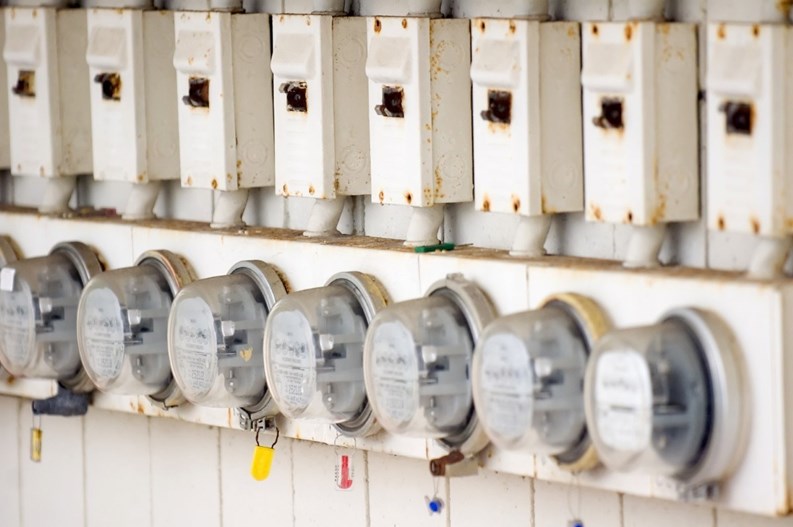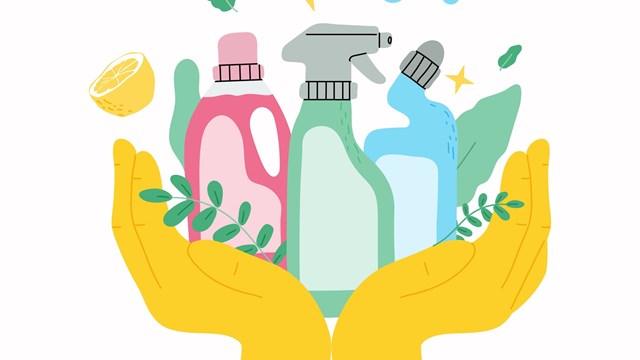Funny thing about human nature—it’s not impulsively "natural" at all.
Despite knowing that 1.1 billion people lack clean drinking water and thousands of children die from the diseases in that dirty water, people living in better circumstances tend to ignore their own ability to decrease the amount of water waste through sensible, environmental practices. Like fixing the leaking toilet. Turning the water off. Upgrading appliances. Taking shorter showers. Defrosting food in the refrigerator instead of under running water. Just in general using less water.
The same holds true for gas and electric use. In condominium residences, where multiple units may share one “portal” with a single meter — and, therefore, simply split the utility cost — residents are less cognizant of waste.
Now, with half the country sweltering for most of 2014 and drought affecting everything from water supplies to the prices of vegetables and fruit, the voice for conservation needs to be heard. One way to do that, condominium managers know, is to install submetering (real-time) systems for water, gas and electric utilities. Residents with big families, paying the same rate as singles for their water use under a single-metering system, may protest. But they'll also start to use less water. Statistics show at least a 20 percent reduction in usage after the installation of submetering systems.
Turns out, when the bucks used to pay the utility bills come from one’s own back pocket, the water bill goes down and the thermostat is dialed back.
Americans are certainly more aware of energy waste these days, but the temptation to waste is greater when the bill is the same, regardless of use. Submetering is a positive answer in a society that can no longer support waste. It’s also a more equitable approach for those who do their part to conserve.
Reducing water, gas and electric is not just for the western and southwestern parts of the country, where drought and high temperatures have threatened the water supply for decades. The East coast may not have these dire realities, but the federal Environmental Protection Agency (EPA) is pushing to direct everyone’s thinking toward less waste and more conservation. Even manufacturers who rely upon water in myriad ways have taken it all seriously.
“The rising cost of water production and treatment makes conservation a priority, even where water is plentiful,” warns the Daniel L. Jerman Company of Hackensack, New Jersey, a supplier of water meters and related equipment. “Property developers and managers who invest in submetering quickly realize a positive financial impact. Submetering allows the transfer of most of the water and sewer utility charges to (users) ... The sewer utility cost based upon water usage is very often a multiple of the water cost, so the cost savings can be impressive. Tenant conservation reduces a property’s utility charges... Property value, for resale or refinancing, is increased significantly by the profit and cash flow improvement that submetering generates.” Individual meters increase awareness of water use, both in condominium settings and in apartment complexes, where, the company says, “tenants appreciate the fairness of paying for only their usage, and avoiding rent increases driven by others’ excessive water use.”
The EPA has approved submetering since the early 2000s and operates several informational and voluntary programs having to do with water and energy conservation systems. In 2003, it revised an earlier policy that had relegated associations to the position of water “sellers” and increased the complexity of using a submetering system. Those early regulations no longer apply, so long as an association obtains water from a regulated public water system.
Recognizing Waste—and Fairness
Todd Quarterman, owner and president of WaterWatch Corp. in Rochester, New York, says there’s still a way to go in terms of submetering multiple-residence units. There are millions of them, and only a fraction are submetered. But the move is on, greatly due to the change in environment. The greater supply of water in northeastern states doesn’t mean there’s any less need for conservation and, thus, submetering, he says.
Utility prices are increasing every year, given more finite resources. When owners see their consumption through submetering, and must pay for their actual use—as opposed to a small portion of the shared bill for one-meter readings— the cost of waste hits home. WaterWatch provides clients in 31 states, including most of New England, with electric, water and gas submetering systems. Quarterman says awareness is increasing each year. “Any condominium community that has a master meter is a candidate for submetering.”
That said, it’s less expensive to start at the new construction level. The more expensive installations tend to be in older buildings, say pre-1980s, where there are shared utilities between units.
Basic installation of a water submeter averages $225 to $275, Quarterman says, but costs are highest when shared plumbing situations are involved, such as when two units are sharing one water outlet. “It’s not an easy application to install a submeter for that type of unit, and it could get very expensive,” he explains. That’s the case with most condominium buildings built before 1980. “There’s an 80 percent chance they’ll have shared plumbing,” he says.
Opposition to submetering generally comes from unit owner with large families, who realize they are paying for only some of the water they use. “If a property is made up with 60 percent families and 40 percent couples, and they vote on submetering, there’s a good chance the families won’t want the submetering because they’re going to be held accountable for their usage, where it was a flat fee before,” Quarterman said.
He calls submetering “definitely more fair,” and considers it a win-win situation, as once the system is installed it becomes a conservation tool. “You see a 20 to 30 percent drop in consumption.” Once the initial quarreling is over, he says, people generally come around to realizing that submetering is both fair and environmentally friendly. “Each month, you receive a bill based on your water usage. The board needs to figure the proper way to pass a submetering proposal; once it goes through, they don’t have too many problems.”
Electric and gas submetering also encourage responsible use among residents while helping to control utility expenses, Quarterman says. “Installing submetering for electric and gas usually costs more if it’s more difficult to install, but it operates on the same level, allowing remote readings via radio transmitter. These individual readings also help identify leaks and other costly issues that need attention. They might not be as easy to identify with a master meter. Leaky faucets and toilets are handled, once an individual is paying the bill for water waste. Before submetering, they could look at usage every month or quarter, and not know where the leaks are. But after submetering, they’ll go find it.”
Simpler From the Start
“My experience has been that the decision to submeter is made by the original developer,” said Ron Burke, principal engineer at Meter Engineering in Norfolk, Massachusetts. “An existing condominium association would have difficulty converting because they would have to get buy-in from the majority of ownership, and that is usually difficult to accomplish. We see two types of customers: one, developers who want to submeter and are willing to implement the system during the design and construction phase, and two, existing condominiums with a submetering system that they are looking to upgrade or repair.
“There are numerous possible submetering scenarios that vary, depending upon the type of mechanical systems in the building,” Burke says. “Generally speaking, all units will already be separately metered by the local utility for electric. In some cases, gas is also already separately metered by the utility—although this is becoming less common.
“Third party, or non-utility-based submetering, is often used in a building with a central boiler and/or chiller plant with a master utility meter. They consist of devices that measure individual heating and/or cooling use and apportion the cost to residents on the basis of use. A derivation of this is also available for domestic water submetering. These types of systems have been in use in the U.S. since about the 1970s and in Europe since the 1920s.”
Installation from the get-go is preferable, as newer wireless based systems are simpler to implement. “The typical cost ranges from $250 to $500 per measurement point,” Burke said. “So if they had one HVAC unit and one water meter, the typical cost would be $500 to $1,000 for that condo unit. The wireless technology used is mature and very reliable. The software that we use to remotely read the meters integrates with conventional office software, such as Word and Excel, and has built-in auditing features that can be used to deal with billing disputes. Usually, the supplier/installer will provide the ongoing remote monitoring and billing services on behalf of the condo association.”
The expense must be borne by the association, despite the fact that submetering leads to better energy use. “There are currently no government or utility incentives that I am aware of,” Burke said. “Submetering offers residents a significant financial incentive to reduce heating, cooling and water costs. Various studies have shown about a 20 percent reduction in total building energy use when submetering is used. Submetering is also considered to offer a marketing advantage, versus one that does not, especially in buildings with part-year residents.”
Incentives change, however, and checking with the U.S. Department of Energy may lead to a roster of state incentives that can be applied to utility submetering—through their Database of State Incentives for Renewables and Efficiency (DSIRE) program. Benefits vary by state. Submetering a property can now also provide credits towards the Water Efficiency and Energy and Atmosphere categories of LEED certification.
Check Regulations
Subject to local regulations, utility submetering may allow an association to bill residents for their individual use or monitor consumption throughout the property—common or private—such as HVAC, indoor and outdoor lighting, refrigeration, etc. It also allows building managers to see energy use and equipment performance, leading to improvements in energy and capital expense savings.
In electrical submetering, typically a multi-unit dwelling has either one master meter for the overall property, or a meter for each building. The association remains responsible for the entire utility bill, but submetering allows the association to pin down each unit’s usage by quantity.
Submetering is legal in most states and municipalities, but owners should consult a utility management vendor for assistance with local and state compliance and regulations.
Mike Durand, a spokesman for Northeast Utilities, which has customers in Massachusetts, New Hampshire and Connecticut, says the utility provider is not involved in submetering, but provides either a master meter for an entire condominium building, or individual meters for each unit. In some cases, an electrician may install a metering package to define individual use as a way for the association or manager to know where the electricity is going.
It’s legal to submeter in New England states but condominiums should check for any regulations about billing residents for water and sewer use. Some regulators may not allow an association to bill residents for their individual use after it’s defined by a submetering system; Durand stresses the need to check local regulations. Associations may also find they can obtain this information by checking with submetering system providers in their states.
Ann Frantz is a Massachusetts freelance writer and a frequent contributor to New England Condominium.







Leave a Comment